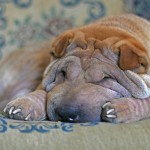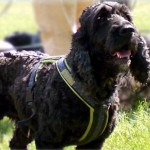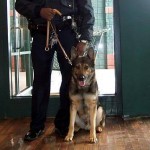Written by Senior Editor Peter Gehr
The best puppy dog psychology training method is the one you develop right at home. Being a dog owner is much the same as being a parent. In other words, just as you would give a child attention, time and effort, your puppy needs the same focus and consistency. Having a dog and playing with him/her and watching the funny antics is one thing, and it’s important to have fun with your pet, as this is part of play—which the dog is inherently designed for.
Unfortunately, you can’t expect the dog to learn by itself. There must be time and dedication scheduled into your day to educate and train your pooch. A puppy is not going to stay a puppy for very long, and it’s those formative months that are crucial for the development of his body, mind and relationship with you—his parent, or pack leader.
Best Puppy Dog Psychology Training Method
Cesar Millan advises the following:
The more you learn about dog psychology, the better you will be able to connect with your canine companion!
Dogs are not humans. Before they receive love and affection, they need exercise, clear direction, and leadership. Giving them love alone doesn’t create balance in their lives. Be a pack leader!
Rehabilitating a dog is not about “fixing” it. It’s about you, the owner, creating the intention for what you want, not what you’re feeling. Dogs pick up on feelings of fear, doubt, or worry – and they will move to fill them by attempting to become dominant.
Practice unwavering leadership every day, especially on your walk. The energy you’re projecting internally is the message you’re sending to your dog.
Dedicate at least 45 minutes of time to the dog’s walk in the morning. Let the dog know you have a consistent pattern that you expect it to follow. Utilize your dog’s energy in a positive manner.
Don’t expect more from your dog(s) than your own children. Dogs need discipline, too. Give them rules, boundaries, and limitations as well as love.
Avoid nurturing your dog’s fears or unstable mind. Imagine a successful scenario and hold it in your mind when dealing with your dog.
You are the source of your dog’s energy. You are the role model.
Challenge the dog’s mind – dogs want to know what to do with their lives. Let the dog work for your affection. Once in a calm-submissive state, your love will intensify those qualities in your dog.
Dogs need “on” and “off” time. Engage them fully in structured times together; then they can relax and avoid impatient or destructive behaviors. (Original story here)
A dog left by himself all the time will end up an unruly, misbehaved and often destructive pet, and the best puppy dog psychology training method is best applied daily, regularly and consistently. There are too many dogs out there that have grown up with little or no training, and the mistake that a lot of people make is that they talk to the dog like a human and expect him to understand what’s been said. For the most part, although dogs learn commands and recognize the sound of words in relation to what you want, they don’t really understand the word, but more the request, or command association to the word. Be the best you can be with your dog, and offer that security and mental stability that he will respond to and the end result will be a happy puppy in a happy environment.
Please take some time to comment and share with your Facebook friends by hitting the Like button below.










